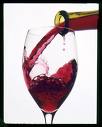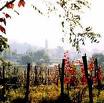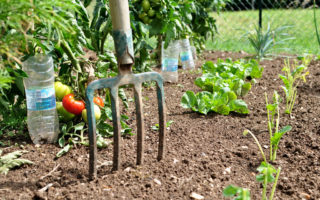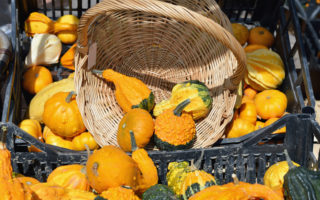Red, white or vegetarian sir?

‘Bottle of wine, fruit of the vine’ as the song goes. Yes, we all know that wine is made from grapes and not meat. So what is vegetarian wine? Well, some wines are not suitable for vegetarians due to the use of animal-derived ingredients in their production.
‘Animal ingredients? In wine? How can that be?’ I hear many of you splutter into your glass.
Animal ingredients used in wine making are gelatin (made from cow’s or pig’s hooves and sinews), isinglass (extracted from the air bladders of fish), chitosan (derived from the shells of crustaceans), albumin (egg whites), and casein (from milk). The very thought of gelatin, isinglass and chitosin would be a real turn off for vegetarians. Some might be OK with albumin and casein; vegans would certainly not be. It is claimed that animal products like isinglass or gelatine do not remain in the finished wine, but it’s the principle that counts.
Once upon a time, winemakers used animal blood, so at least things have moved on a bit – it was declared illegal in Europe in the aftermath of the BSE (mad cow disease) outbreak.
So why put animal products in wine?
These ingredients are used in the ‘fining’ or filtration process to help remove solids such as grape skins, stems, pips and yeast. The agent is added to the wine. It then spreads out, like a net, and sinks to the bottom dragging the ‘gunk’ down with it. The clear wine is then racked off, leaving the fining agent and sediment behind.
The good news is it is not necessary to use animal ingredients in fining – bentonite (a form of clay) and kaolin are two minerals used for fining. Even better news – the vast majority of wines are fined with bentonite these days. Also, some winemakers filter their wine mechanically without the use of additives, whilst others use no finings at all, allowing time for the wine to settle naturally. These unfined and unfiltered wines are becoming increasingly popular – some people argue that the less you do to a wine the better it will taste.
One thing worth remembering is that organic wine is not necessarily vegetarian. It often is, but not always, so make sure before you buy.
Thankfully there are many types of French wine that are suitable for vegetarians and vegans, right across the spectrum of grape types and price ranges. These include red, rosé, white, sparkling wines and Champagne.
So how do you know which wines are vegetarian?
.jpg) After all, in both the UK and France producers are not obliged to declare which fining agents they use. In the UK some stores such as Tesco, Waitrose, the Co-op and Marks & Spencer label wine as being suitable for vegetarians, some even using the UK Vegetarian Society’s logo, but most retailers leave you guessing.
After all, in both the UK and France producers are not obliged to declare which fining agents they use. In the UK some stores such as Tesco, Waitrose, the Co-op and Marks & Spencer label wine as being suitable for vegetarians, some even using the UK Vegetarian Society’s logo, but most retailers leave you guessing.
Here in France I actually visited our local co-operative vineyard and asked them about their production process. I was simply told that they were not legally obliged to inform me whether or not they used vegetarian ingredients. Even when I told them that it would influence whether or not I would buy their wines the reply was the same. I will leave it up to your imagination whether or not I made a purchase!
In the UK you can use those stores that label which of their wines are vegetarian, but also you can buy wines from specialist merchants, such as Vinceremos, Vintage Roots, or Smithfield Wine who will be able to advise you on vegan as well as vegetarian choices. These companies are very helpful and provide a good range of suitable wines. Majestic Wine also tells you which of its wines are vegetarian or vegan, and are a good source. Why am I telling you about UK specialist merchants? All will be revealed below.
In France things are different. Whilst wine can be bought over the internet here, I have yet to find a supplier of wine labelled as vegetarian wine in this country – but on the other hand as we are surrounded by the stuff the best option is to source it yourself. First of all have a look at the specialist merchants mentioned above on the internet and list the wines that interest you – if you are visiting the UK or know someone there willing to help, you can note down the names of Tesco, Waitrose or Co-op vegetarian wines. Another information source for wines in France is Veggiewines. As with everything on the internet though, it is up to you to decide on its authenticity.
You then have the names of the wines, but even if you arrive at your supermarché or cave armed with your comprehensive list of veggie wines, there is no guarantee that you will find any of them. In fact, with the many thousands of French wines available I reckon your chances are extremely slim. Give it a try, but don’t be disappointed if you come away empty handed. You can always console yourself with a glass of wine, oh but…
 My advice is to do what Jocelyn and I did. About three years ago, using information gleaned from the specialist merchants over the internet and from UK stores, we found vineyards relatively close to where we live. We are in the Charente département so we chose wines from the Bordeaux and Bergerac regions. We then Googled the names of the vineyards, found their locations and planned a route to take in a number of them. Then the fun began. Armed with map, empty car, roof-box, packed lunch and a sense of adventure (tinged with a slight fear of the unknown), we set off on our adventure.
My advice is to do what Jocelyn and I did. About three years ago, using information gleaned from the specialist merchants over the internet and from UK stores, we found vineyards relatively close to where we live. We are in the Charente département so we chose wines from the Bordeaux and Bergerac regions. We then Googled the names of the vineyards, found their locations and planned a route to take in a number of them. Then the fun began. Armed with map, empty car, roof-box, packed lunch and a sense of adventure (tinged with a slight fear of the unknown), we set off on our adventure.
Our first port of call was Château le Rait just outside Les Lèves in the Gironde. Château le Rait is actually little more than an old stone barn and a couple of other buildings (this is quite common in France – not all Châteaux are majestic piles). There was no sign of life, so we knocked on the door of a nearby cottage where we given rather complicated directions involving many gauches and droites to the house of M Claude Capoul (the proprietor). We thought we’d done rather well as we approached a group of buildings, only to find that we’d ended up back at the cottage where we had been given directions. We slunk off, hoping that we hadn’t been spotted, and eventually found the right place. There was no reply at M Capoul’s door, but his neighbours (after insisting that we look around their house that was for sale) kindly sent us off in the direction of the local Marie. Apparently M Capoul was the mayor of Les Lèves and was more likely to be there than anywhere else. We were shown into the office of the Marie and were asked to wait as he was due ‘at any moment’. Of course after half an hour of waiting, chatting with the secretary and playing with her obligatory little white poodle, he hadn’t turned up, so she kindly telephoned him. He eventually arrived; we said our Bonjours, and explained that we were interested in his wine. He was then immediately presented with a huge pile of letters and forms that required his signature and so another 20 minutes ensued. We then followed him back to the château to taste his wine. Unfortunately he didn’t have a corkscrew, so he shot off in the direction of his house and we waited until he came back. Fortunately the wine was well worth the wait. He produces excellent Appellation Sainte Foy Bordeaux Contrôlée red, white and sparkling wines which as well as being vegetarian, are organic. However, our adventure hadn’t quite ended. After ascertaining how many bottles we would like, Claude disappeared into the vineyard. He came back another 10 minutes later with a colleague who went into the corner of the barn and started up a bottle labelling machine that Heath Robinson would have coveted. With great whirrings, bangs and squeaks, belts started moving, arms sent glue sloshing onto labels which were slapped onto bottles which were then packed into crates. It was truly an amazing sight.
 We had planned to visit about ten vineyards, but by the time we had loaded the car and driven off we realized that a good part of the day had passed us by and we had only managed one! Anyway, we were not disheartened – we are in France to experience French life and we were certainly doing that.
We had planned to visit about ten vineyards, but by the time we had loaded the car and driven off we realized that a good part of the day had passed us by and we had only managed one! Anyway, we were not disheartened – we are in France to experience French life and we were certainly doing that.
Our next visit was to Château Couronneau, and what a contrast to Château le Rait! We approached Couronneau on a long, straight gravel drive between an avenue of Cypress trees, and the château itself is stunning. We were warmly welcomed by the enthusiastic owners, Bénédicte and Christophe Piat. We soon realised that they are a dynamic couple; as well as making fabulous reds and whites in the grounds of the beautiful château, in the twelve years since they bought the property they have painstakingly renovated the historic buildings using traditional methods and materials. It was a pleasure to see the craftsmanship employed in the work, which is a great advert for the effort they put into producing their wines. In the west of the Bordeaux region, located at the highest point of the Gironde, the estate’s chalky clay soil rests on top of steep chalky substratum – perfect for the merlot grape, which thrives in these conditions and ripens well, with great body and rich, ripe fruit. Having a great reputation amongst the critics and the winner of gold medals aplenty, this is a forward looking estate making some of the best Bordeaux Supérieur you can buy. As with Château le Rait, the wines as well as being vegetarian, are organic. Bénédicte told us that their vineyard is surrounded by mature woodlands which act as a buffer to the surrounding non-organic vineyards, keeping out the herbicides and pesticides sprays of their neighbours. Their neighbours joke that the woodlands act as a buffer in the opposite direction, keeping out the bugs and diseases that they must suffer from by not using such sprays! After tasting the range of wines they produce we made our purchases and were on our way.
One good thing about visiting vineyards is that the owners are happy to sell you anything from one bottle to a Transit van full – and apparently there is not a problem if you decide to buy nothing (heaven forbid!).
We took in another couple of châteaux before heading home, and considered it to be an excellent day. We met many interesting and helpful people who, without exception, greeted us with a smile. We saw where and how the wines were produced, we travelled through picturesque countryside and we came away with a car creaking and groaning with six months supply of wine.
 We now make two annual ‘pilgrimages’ to the Bordeaux region and still visit the places that we originally went to as well as taking in new producers. Château le Rait has become a firm favourite – its subtle wines particularly suit us – and we make sure that our trips always include a visit there. After our first experience though we always telephone our order a few days in advance so that at least the labels have been stuck on the bottles before our arrival.
We now make two annual ‘pilgrimages’ to the Bordeaux region and still visit the places that we originally went to as well as taking in new producers. Château le Rait has become a firm favourite – its subtle wines particularly suit us – and we make sure that our trips always include a visit there. After our first experience though we always telephone our order a few days in advance so that at least the labels have been stuck on the bottles before our arrival.
We also keep a map of France with vegetarian châteaux marked on it and whenever we travel within France we take it with us so that we can sample wines of other regions. Prior to a trip over the border to Spain last year we did some research and found a vegetarian vineyard close to Barcelona.
Wherever you are in France you are never very far from a wine producing area, so I would definitely recommend doing a bit of research, finding producers of vegetarian wine you are relatively close to and paying them a visit.
Trevor Bridge, 16450 St Claud
Share to: Facebook Twitter LinkedIn Email
More in champagne, charente, maps, people, travel, wine, work
Leave a reply
Your email address will not be published. Required fields are marked *



